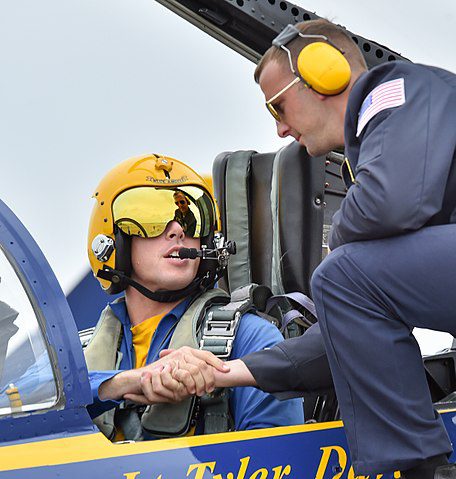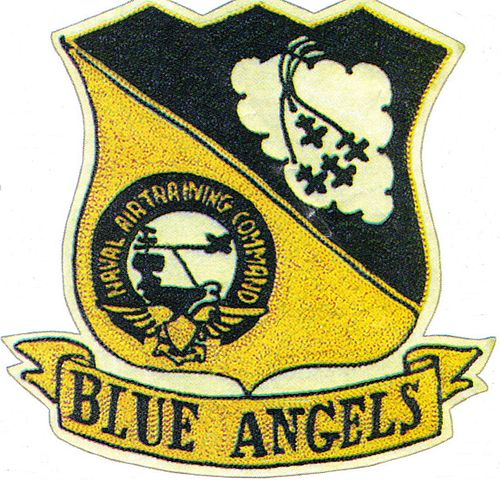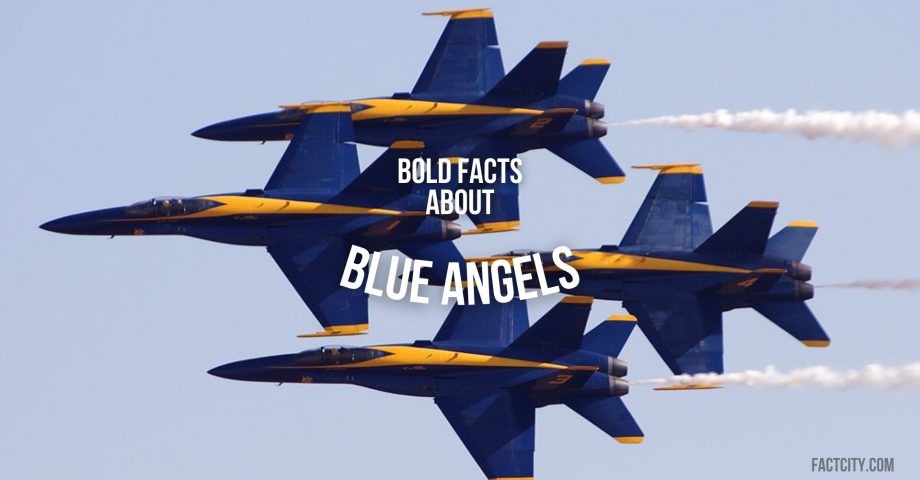12 Bold Facts about Blue Angels
Who doesn’t love it when the Blue Angels take off? This incredible squadron can be viewed doing some amazing maneuvers and representing the US Naval Air Force during their show season every year. But who are the Blue Angels, and how does the team work? Here are some fun facts about the Blue Angels to introduce you to their air-based aerobatics.
1. They have been around since the 40s.
The Blue Angels were first officially formed in 1946 and are the United States Navy’s flight demonstration squadron. They are based at Naval Air Station Pensacola in Florida. You can visit Pensacola’s National Naval Aviation Museum in Florida, which features an exhibit dedicated to the Angels, showcasing the team’s history and contributions to naval aviation.
2. They fly hornets.
No – they don’t take small, winged creatures out for walks! The Blue Angels currently fly a Boeing F/A-18 Hornet, what’s known as a multirole fighter jet. They previously flew the A-4 Skyhawk and the F-4 Phantom II.
3. They are made up of six pilots.
The standard Blue Angels squadron consists of six demonstration pilots. The squadron usually has one or two alternates. Naturally, the team has changed personnel a few times over the years!

4. They perform stunning aerobatics.
The Blue Angels perform aerobatic maneuvers and precision flying during their air shows. Their shows demonstrate the capabilities of naval aviation. You might have heard of the British equivalent, the Red Arrows – it’s all about showing off some daredevil feats high up in the sky!
5. They have a Boss – and yes, they’re very important.
The Blue Angels’ commanding officer, known as the “Boss,” is typically a Navy Commander with extensive flying experience. However, the lead pilot of the Blue Angels is referred to as Blue Angel Number 1. This position is responsible for coordinating the team’s maneuvers during performances. You’d better pay close attention to the Boss if you want to fly well!
6. They often do the diamond formation.
One of the most famous signature formations of the Blue Angels is the diamond formation. In that formation, four aircrafts fly in a tight, diamond-shaped pattern. This signature move is captured many, many times online – take a look on social media and YouTube!
7. They can produce sonic booms.
The Blue Angels are known for producing sonic booms during their performances! Sonic booms are caused by flying at speeds faster than the speed of sound! It’s probably best to hold your ears if you get too close, then!
8. They fly with Fat Albert.
No, not the cartoon character – the Blue Angels have a support aircraft called “Fat Albert,” a Marine Corps C-130 Hercules. Fat Albert also performs a separate aerobatic routine during air shows.
9. They’re an annual sight across the US.
The Blue Angels typically perform in air shows across the United States during their show season, which runs from March to November. I don’t blame them for putting their vehicles away during the cold snap!

10. They practice tirelessly.
As you can imagine, the Blue Angels conduct rigorous practice sessions before each air show to ensure precision and safety in their maneuvers. It takes years of dedication to become a talented Blue Angel.
11. The pilots are very carefully chosen.
Pilots for the Blue Angels are carefully selected. They are chosen based on their flying skills, experience, and professionalism. They serve a two to three-year tour with the team. But, what a heck of a thing to say you’ve done!
12. They are very charitable.
The name also lends itself to the Blue Angels Foundation. The foundation is a charitable organization closely associated with the team that focuses on supporting military families and communities. So, while they fly high, they’re also very… down to Earth. See what I did there?

FAQs about the Blue Angels
What is the purpose of the Blue Angels?
The point of the Blue Angels is to demonstrate the professionalism, trust, loyalty, and general teamwork of the US Navy and Marine Corps.
How much do the Blue Angels pilots make?
Generally speaking, a Blue Angels pilot is said to make just over $130,000 per year.
Are Blue Angels TOPGUN pilots?
Some Blue Angels pilots have been through TOPGUN; however, it is not a necessary step to take before becoming a Blue Angel.
Further reading
https://www.blueangels.navy.mil/
https://navalaviationmuseum.org/blueangels/
Do you know any interesting facts about Blue Angels? Share them in the comments section below!
This page was last modified on February 17, 2024. Suggest an edit









